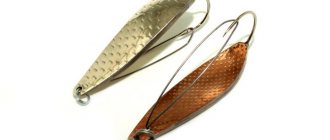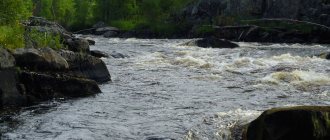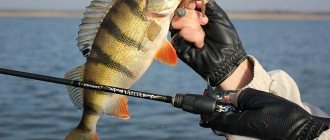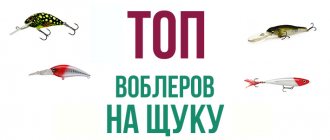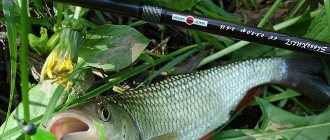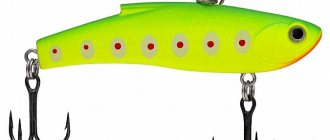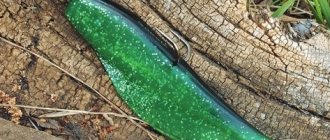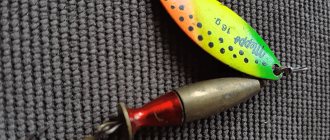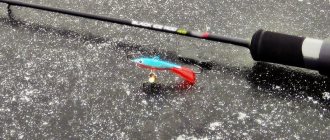Pike – a predatory fish, the most treasured trophy among fishermen. Some specimens weigh about 20 kg. In special cases, you can find pike more than 1.5 meters long. In addition, as a rule, females are larger than males. In the fishing circle, it is customary to call a pike weighing more than 10 kg “crocodile”.
In order for fishing to bring not only pleasure, but also to please you with a good catch, you should know all the intricacies of preparation and the fishing process itself.
In this section we will analyze all the methods of fishing for pike, as well as how to properly catch pike at this or that time of the year.
Pike lifestyle and habitats
Predatory fish are conventionally divided into two types - “ambushers” (those that attack their prey from cover) and “catchers” (predators that directly pursue their prey). Pike belongs to the first option. Compared to other types of fish, it has its own characteristics. Where should you fish for pike? Here are the basic principles of searching for it in a body of water:
- The predator lives in places overgrown with grass. Most often it sticks to the shore and stagnates in the roots of trees. Larger pike live at depth in the steeps and hunt only in the early morning or late evening.
- Pike has the ability to change its color. That is why in different bodies of water and places you can find both light golden and dark brown predators.
- The main feature of pike is its eyes. They protrude from the head. Thanks to this, the predator has a large overview of the area, even when standing in one place.
Predator food
Pike eats almost everything that comes its way, mainly of animal origin. Its victims may be:
- juveniles and adult fish;
- worms, beetles, larvae, leeches (especially after spawning);
- rodents that swim across a body of water;
- small waterfowl.
Biting periods
There are three main periods of active pike biting:
- Pre-spawning period.
- Post-spawning period (1-2 weeks after spawning).
- Autumn bite before wintering.
In summer, the predator is inactive. This especially depends on weather conditions. The bite intensifies during a thunderstorm and at low atmospheric pressure (indicators of 145 and below).
Spawning
The timing of pike spawning depends on the temperature of the water. The thermometer readings should be no less than + 3 degrees Celsius. As a rule, this falls in the first ten days of March. Pike begin to spawn only at the age of three. The female lays her eggs on fallen branches or coastal vegetation. The number of eggs depends on age.
Open water fishing methods
From early spring to late autumn, there are four ways to catch pike in open water, namely:
- fishing for pike with a spinning rod;
- catching pike on the track (trolling);
- fishing for pike with mugs;
- catching pike with a rig.
- Spinning fishing.
The most common way to catch pike is spinning fishing. But the choice of gear should be taken seriously. There are several important points to consider:
- When choosing a spinning rod, you need to pay attention to its structure. You need to raise the rod so that the top rests against the wall and gently press the handle. A good fishing rod should bend evenly in accordance with its action.
- The reel must be inertia-free, so that when casting, “beards” do not appear and the line does not get tangled. This reel allows for longer casting. All types and designs of spinning rods are suitable for pike fishing, since the predator responds well to baits of different weights from 2 to 150 g.
- You should choose a spinning rod based on the desired size of the fish, the weight of the bait and the fishing method.
In the next video you can see how to catch pike with a spinning rod . Quite interesting and useful material, we recommend it.
Exploded snap-ins
For bottom fishing for pike with silicone baits, in many cases, spaced-out rigs are indispensable. These include:
- drop shot;
- diverter leash;
- Carolina rig;
- Texas rig.
To make a drop shot, the sinker must be secured to the end of the main fishing line, and the hook with bait must be tied to it several tens of centimeters higher. This equipment is suitable for vertical fishing, for fishing for passive pike by casting from a boat, bridge or high bank.
To mount the diverter leash, you need to secure the load at the end of the main fishing line, and tie a piece of monofilament 20-30 cm above with a length of 40 cm to 1.5 meters. The equipment is suitable for catching passive pike .
Texas rig is used for fishing in snags and grass thickets , where there is a high probability of snags. To make it, you need to place a sliding bullet sinker and a silicone stopper on a steel leash, and then attach an offset hook to it.
To make a Carolina rig for pike fishing, you need to put a sliding bullet sinker on the main fishing line, then place a silicone stopper on it, attach a leash made of monofilament or fluorocarbon with a length of 30 cm to 1.5 m, and attach a metal leash with an offset to it. This installation is also used for fishing snags and grass thickets . It provides a more lively and free play of the bait than the Texas rig, but the likelihood of hooking when using it is higher.
Lures
There is a large selection of baits. Sometimes it's hard to settle on anything specific. After all, each bait has its own characteristics. Usually pike are caught using baits such as:
Spoon has a very large variety of flowers. Its use depends on the transparency of the water. The more transparent the pond, the darker the spoon should be. You should not give preference to tees of impressive size. Because in this case, the fish may sense a catch.- The wobbler is selected according to the same principle as the spinner. But it is better to give preference to natural and acidic colors.
- Twisters and vibrotails (jigs) create a visual illusion for pike. The predator recognizes them as worms or larvae. The tail moves in waves and imitates a living organism. Jig is most suitable for deep waters and places where there are a lot of snags, algae and stones.
- Popper (a squelching type of wobbler) is a bait that mainly attracts pike in the summer and early autumn.
- Fishing with live bait . The best options for pike are perch, roach, crucian carp, silver bream, bleak, gudgeon, and rudd. The larger the size of the bait or live bait, the greater the chance of catching a big pike. A small fish is more likely to bite on a small bait.
More information about pike lures and their choice can be found in the article “Lures for catching pike with a spinning rod,” which also tells you when you can catch pike and with what lures.
The choice of bait depends not only on the terrain, but also on weather conditions and the fishing season.
Fishing line. When choosing a fishing line or braided cord, you should give preference to the following diameters:
- fishing line 0.3-0.5 mm;
- cord 0.1-0.2 mm.
A fishing line of this diameter can easily withstand large specimens of pike. Please note that the reserve on the reel must be no less than 100 m.
If you use a thicker fishing line, the tackle loses its catchability. And besides, the bait worsens its playing qualities. But it is still better to give preference to a braided cord. Since it has minimal stretch, it is more wear-resistant and allows you to clearly control the bite and bait tactilely.
Wiring. Which one to choose? A very important point when fishing for pike with a spinning rod is correct wiring. It depends on the bait, the fishing location and the depth of the reservoir.
- Uniform wiring . When wiring this way, you need to rotate the coil evenly. The best baits are spinners: spinners and spoons.
- Uniform wiring with pauses - uniform rotation of the coil with stops.
- Stepped wiring . This type of wiring allows you to tap the bottom with bait. You need to cast and position the tip of the rod above you to create an angle between the direction of the line and the spinning rod. As soon as the bait touches the bottom, the rod tip will weaken. This means you need to start rewinding. Next, the coil needs to make 2-3 turns and stop. As soon as the bait reaches the bottom again, you need to reel again. This type of wiring is suitable for jig baits: twisters, vibrotails, various worms, crustaceans and similar silicone baits, which are loaded with a lead or tungsten weight.
- Twitching (jerk) wiring . This type of wiring is most often used when fishing with a wobbler. During the jerk, it moves to the side or makes a high-frequency oscillation. This game teases the fish and provokes action. The frequency of jerks, amplitude and pauses between twitches are selected based on the activity of the pike and the depth of the reservoir (if it is a sinking wobbler). As a rule, they do a jerk - a pause, two jerks - a pause, alternating them alternately.
